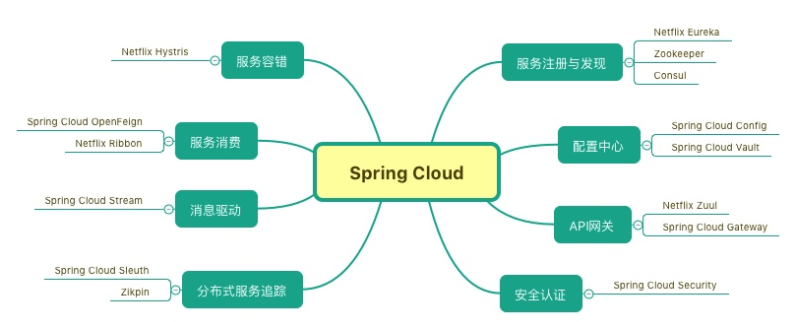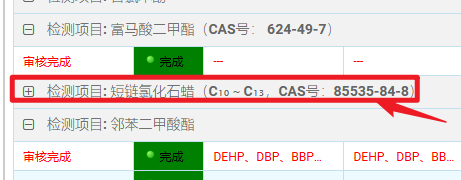[20230908]Oracle Index Range Scan with LIKE Condition on Wildcard ‘_’.txt
–//昨天看链接:http://ksun-oracle.blogspot.com/2023/09/oracle-index-range-scan-with-like.html,当时一下子没有反应过来,
–//作者这样查询怎么会有这么大区别呢?仔细看题目才明显原来查询的字符串里面存在_,解析为任何字符,这样索引的扫描范围不同,
–//导致出现逻辑读很大的不同。我重复测试看看。
1.环境:
SCOTT@test01p> @ver1
PORT_STRING VERSION BANNER CON_ID
—————————— ————– ——————————————————————————– ———-
IBMPC/WIN_NT64-9.1.0 12.2.0.1.0 Oracle Database 12c Enterprise Edition Release 12.2.0.1.0 – 64bit Production 0
2.建立测试例子:
–//drop table test_tab purge;
create table test_tab (
id number
,grp number
,tstr varchar2(14)
,name1 varchar2(100)
,name2 varchar2(100)
,name3 varchar2(100)
);
create unique index test_tab#p on test_tab(id);
alter table test_tab add constraint test_tab#p primary key (id);
create index test_tab#i#name1 on test_tab (name1);
create index test_tab#i#name2 on test_tab (name2);
create index test_tab#i#name3 on test_tab (name3);
–//作者建立索引的风格与我的不同。
insert into test_tab
with sq as (
select level id, mod(level, 300) grp
,to_char((date’2021-11-22′ + rownum/86400), ‘YYYYMMDDHH24MISS’) ts
,decode(mod(level, 3), 0, ‘ONE_PART’, 1, ‘TWO_PART’, 2, ‘THREE_PART’) part
from dual connect by level <= 3*1e5)
select id, grp, ts
,part ||’.’||grp ||’.’||ts name1
,grp ||’.’||part ||’.’||ts name2
,ts ||’.’||part ||’.’||grp name3
from sq;
commit;
exec dbms_stats.gather_table_stats(”, ‘TEST_TAB’, cascade=>true);
col name1 for a30 new_value n1
col name2 for a30 new_value n2
col name3 for a30 new_value n3
SCOTT@test01p> select id, name1, name2, name3 from test_tab m where id = trunc(dbms_random.value(1, 3*1e5));
ID NAME1 NAME2 NAME3
———- —————————— —————————— ——————————
244018 TWO_PART.118.20211124194658 118.TWO_PART.20211124194658 20211124194658.TWO_PART.118
–//主:3个字符串3种风格。最后一个顺序递增,并且字符串_出现的位置最靠后。
select count(*) lect count(*)
,count(distinct substr(name1, 1, instr(name1, ‘_’)-1)) name1_prefix_cntx_cnt
,count(distinct substr(name2, 1, instr(name2, ‘_’)-1)) name2_prefix_cntx_cnt
,count(distinct substr(name3, 1, instr(name3, ‘_’)-1)) name3_prefix_cntx_cnt
from test_tab;
COUNT(*) NAME1_PREFIX_CNT NAME2_PREFIX_CNT NAME3_PREFIX_CNT
———- —————- —————- —————-
300000 3 300 300000
–//字符’_’出现的位置前面重复的部分计数如上。
create or replace procedure test_tab_proc (p_case number, p_cnt number) as
l_start number;
l_start_cr number;
l_end_cr number;
l_name1 varchar2(100);
l_name2 varchar2(100);
l_name3 varchar2(100);
l_ret varchar2(200);
begin
select name1, name2, name3 into l_name1, l_name2, l_name3
from test_tab where id = trunc(dbms_random.value(1, 3*1e5));
l_start := dbms_utility.get_time;
select value into l_start_cr from v$mystat s, v$statname n where s.statistic#=n.statistic# and name = ‘consistent gets’;
case p_case
when 1 then
for i in 1..p_cnt loop
select /*+ index_rs_asc(t (name1)) */ name1 into l_ret from test_tab t where name1 like l_name1;
end loop;
dbms_output.put_line(‘——— Index: name1 like ‘||l_name1||’ ——— ‘);
when 2 then
for i in 1..p_cnt loop
select /*+ index_rs_asc(t (name2)) */ name2 into l_ret from test_tab t where name2 like l_name2;
end loop;
dbms_output.put_line(‘——— Index: name2 like ‘||l_name2||’ ——— ‘);
when 3 then
for i in 1..p_cnt loop
select /*+ index_rs_asc(t (name3)) */ name3 into l_ret from test_tab t where name3 like l_name3;
end loop;
dbms_output.put_line(‘——— Index: name3 like ‘||l_name3||’ ——— ‘);
end case;
select value into l_end_cr from v$mystat s, v$statname n where s.statistic#=n.statistic# and name = ‘consistent gets’;
dbms_output.put_line(‘Total Elapsed MS = ‘||round((dbms_utility.get_time-l_start)*10)||
‘, Total CR gets= ‘ ||(l_end_cr-l_start_cr)||
‘, Per Exec MS = ‘ ||round((dbms_utility.get_time-l_start)*10/p_cnt, 2)||
‘, Per Exec CR gets =’||round((l_end_cr-l_start_cr)/p_cnt));
end;
/
3.测试:
SCOTT@test01p> @ init
SCOTT@test01p> set serveroutput on
SCOTT@test01p> alter session set tracefile_identifier = ‘sql_trc_1’;
Session altered.
SCOTT@test01p> alter session set events ‘10046 trace name context forever, level 12’;
Session altered.
SCOTT@test01p> exec test_tab_proc(1, 100);
——— Index: name1 like THREE_PART.167.20211122130747 ———
Total Elapsed MS = 4210, Total CR gets= 97503, Per Exec MS = 42.1, Per Exec CR gets = 975
PL/SQL procedure successfully completed.
SCOTT@test01p> exec test_tab_proc(2, 100);
——— Index: name2 like 49.TWO_PART.20211122044049 ———
Total Elapsed MS = 100, Total CR gets= 1203, Per Exec MS = 1, Per Exec CR gets = 12
PL/SQL procedure successfully completed.
SCOTT@test01p> exec test_tab_proc(3, 100);
——— Index: name3 like 20211122023738.THREE_PART.158 ———
Total Elapsed MS = 40, Total CR gets= 303, Per Exec MS = .4, Per Exec CR gets = 3
PL/SQL procedure successfully completed.
SCOTT@test01p> set serveroutput off
–//与他的测试基本一致。
SCOTT@test01p> select index_name, clustering_factor, leaf_blocks, blevel from dba_indexes v where table_name = ‘TEST_TAB’;
INDEX_NAME CLUSTERING_FACTOR LEAF_BLOCKS BLEVEL
——————– —————– ———– ———-
TEST_TAB#P 4717 562 1
TEST_TAB#I#NAME1 299999 2765 2
TEST_TAB#I#NAME2 299999 2773 2
TEST_TAB#I#NAME3 4717 1478 2
–//作者的解析:
Before ‘_’, there are 3 different values (‘ONE’,’TWO’,’THREE’). So name1 is divided into three parts. TEST_TAB#I#NAME1
has 2766 leaf blocks, TEST_TAB#I#NAME1 index range scan makes 2766/3, which is 902 CR gets per execution (it performs
like an index partition full scan).
4. Index Meta Data
SCOTT@test01p> select object_name, object_id, to_char(object_id, ‘xxxxxxxx’) object_id_hex from dba_objects t where object_name like ‘TEST_TAB#%’;
OBJECT_NAME OBJECT_ID OBJECT_ID
—————————— ———- ———
TEST_TAB#I#NAME1 30257 7631
TEST_TAB#I#NAME2 30258 7632
TEST_TAB#I#NAME3 30259 7633
TEST_TAB#P 30256 7630
SCOTT@test01p> select column_name, avg_col_len from dba_tab_columns where table_name = ‘TEST_TAB’;
COLUMN_NAME AVG_COL_LEN
——————– ———–
ID 5
GRP 4
TSTR 15
NAME1 29
NAME2 29
NAME3 29
6 rows selected.
SCOTT@test01p> select segment_name, header_file, header_block from dba_segments t where segment_name like ‘TEST_TAB#%’;
SEGMENT_NAME HEADER_FILE HEADER_BLOCK
—————————— ———– ————
TEST_TAB#P 11 3874
TEST_TAB#I#NAME1 11 3882
TEST_TAB#I#NAME2 11 3890
TEST_TAB#I#NAME3 11 3898
alter session set events ‘immediate trace name treedump level 30257’;
alter session set events ‘immediate trace name treedump level 30258’;
alter session set events ‘immediate trace name treedump level 30259’;
–// index TEST_TAB#I#NAME1
—– begin tree dump
branch: 0x2c00f2b 46141227 (0: nrow: 16, level: 2)
branch: 0x2c010fe 46141694 (-1: nrow: 162, level: 1)
leaf: 0x2c00f2c 46141228 (-1: row:107.107 avs:4041)
leaf: 0x2c01d30 46144816 (0: row:108.108 avs:4004)
….
leaf: 0x2c056bb 46159547 (164: row:136.136 avs:2832)
—– end tree dump
–// index TEST_TAB#I#NAME2
—– begin tree dump
branch: 0x2c00f33 46141235 (0: nrow: 17, level: 2)
branch: 0x2c011d3 46141907 (-1: nrow: 149, level: 1)
leaf: 0x2c00f34 46141236 (-1: row:107.107 avs:4041)
leaf: 0x2c01c7f 46144639 (0: row:108.108 avs:4004)
…
leaf: 0x2c056bb 46159547 (164: row:136.136 avs:2832)
—– end tree dump
–// index TEST_TAB#I#NAME3
—– begin tree dump
branch: 0x2c00f3b 46141243 (0: nrow: 5, level: 2)
branch: 0x2c024fb 46146811 (-1: nrow: 368, level: 1)
leaf: 0x2c00f3c 46141244 (-1: row:204.204 avs:16)
…
leaf: 0x2c05b0f 46160655 (2: row:203.203 avs:0)
leaf: 0x2c05b10 46160656 (3: row:51.51 avs:5979)
—– end tree dump
–//这是因为前面2个索引50-50 分裂,而最后递增顺序插入,这样90-10分裂(实际上最后那条插入的条目在另外的新索引块上)
— index range scan gets index TEST_TAB#I#NAME1 blocks in ordered read (db file sequential read’).
— index range scan first reads index blocks from root block to the left most satisfied first leaf block along branch blocks,
— then reads from first found leaf blocks till last satisfied leaf block (which are linked with each one points to next one).
— One block per read, logically sequential.
— index fast full scan gets index TEST_TAB#I#NAME1 blocks in unordered read (‘db file scattered read’).
— index fast full scan reads all index blocks (brach/leaf) like full table scan.
— Multiple blocks per read without considering any order.
5.如果过程改写如下,应该基本相同时间完成。
create or replace procedure test_tab_proc1 (p_case number, p_cnt number) as
l_start number;
l_start_cr number;
l_end_cr number;
l_name1 varchar2(100);
l_name2 varchar2(100);
l_name3 varchar2(100);
l_ret varchar2(200);
begin
select replace(name1,’_’,’\_’), replace(name2,’_’,’\_’), replace(name3,’_’,’\_’) into l_name1, l_name2, l_name3
from test_tab where id = trunc(dbms_random.value(1, 3*1e5));
l_start := dbms_utility.get_time;
select value into l_start_cr from v$mystat s, v$statname n where s.statistic#=n.statistic# and name = ‘consistent gets’;
case p_case
when 1 then
for i in 1..p_cnt loop
select /*+ index_rs_asc(t (name1)) */ name1 into l_ret from test_tab t where name1 like l_name1 escape ‘\’ ;
end loop;
dbms_output.put_line(‘——— Index: name1 like ‘||l_name1||’ ——— ‘);
when 2 then
for i in 1..p_cnt loop
select /*+ index_rs_asc(t (name2)) */ name2 into l_ret from test_tab t where name2 like l_name2 escape ‘\’ ;
end loop;
dbms_output.put_line(‘——— Index: name2 like ‘||l_name2||’ ——— ‘);
when 3 then
for i in 1..p_cnt loop
select /*+ index_rs_asc(t (name3)) */ name3 into l_ret from test_tab t where name3 like l_name3 escape ‘\’ ;
end loop;
dbms_output.put_line(‘——— Index: name3 like ‘||l_name3||’ ——— ‘);
end case;
select value into l_end_cr from v$mystat s, v$statname n where s.statistic#=n.statistic# and name = ‘consistent gets’;
dbms_output.put_line(‘Total Elapsed MS = ‘||round((dbms_utility.get_time-l_start)*10)||
‘, Total CR gets= ‘ ||(l_end_cr-l_start_cr)||
‘, Per Exec MS = ‘ ||round((dbms_utility.get_time-l_start)*10/p_cnt, 2)||
‘, Per Exec CR gets =’||round((l_end_cr-l_start_cr)/p_cnt));
end;
/
–//注意带入的字符串以及最后的escape.
SCOTT@test01p> set serveroutput on
SCOTT@test01p> exec test_tab_proc1(1, 100);
——— Index: name1 like ONE\_PART.153.20211122030733 ———
Total Elapsed MS = 140, Total CR gets= 318, Per Exec MS = 1.4, Per Exec CR gets = 3
PL/SQL procedure successfully completed.
SCOTT@test01p> exec test_tab_proc1(2, 100);
——— Index: name2 like 16.TWO\_PART.20211123054516 ———
Total Elapsed MS = 90, Total CR gets= 303, Per Exec MS = .9, Per Exec CR gets = 3
PL/SQL procedure successfully completed.
SCOTT@test01p> exec test_tab_proc1(3, 100);
——— Index: name3 like 20211123182827.ONE\_PART.207 ———
Total Elapsed MS = 70, Total CR gets= 303, Per Exec MS = .7, Per Exec CR gets = 3
PL/SQL procedure successfully completed.
SCOTT@test01p> set serveroutput off
–//3个测试基本平均都是3个逻辑读完成。
6.提醒注意:
–//这个测试最大的提示就是当采用like查询时,查询使用的绑定变量的字符串有_字符,逻辑读可能出现异常,在实际的应用中应该引
–//起注意。
–//看一个具体的例子:
col name1 for a30 new_value n1
col name2 for a30 new_value n2
col name3 for a30 new_value n3
SCOTT@test01p> select id, name1, name2, name3 from test_tab m where id = 1;
ID NAME1 NAME2 NAME3
———- —————————— —————————— ——————————
1 TWO_PART.1.20211122000001 1.TWO_PART.20211122000001 20211122000001.TWO_PART.1
SCOTT@test01p> variable v_name1 varchar2(100);
SCOTT@test01p> exec :v_name1 :=’TWO_PART.1.20211122000001′
PL/SQL procedure successfully completed.
SCOTT@test01p> @ sl all
alter session set statistics_level = all;
Session altered.
SCOTT@test01p> select id, name1, name2, name3 from test_tab m where name1 like :v_name1;
ID NAME1 NAME2 NAME3
———- —————————— —————————— ——————————
1 TWO_PART.1.20211122000001 1.TWO_PART.20211122000001 20211122000001.TWO_PART.1
SCOTT@test01p> @ dpc ” ” ”
PLAN_TABLE_OUTPUT
————————————-
SQL_ID 6952nwup67x5k, child number 0
————————————-
select id, name1, name2, name3 from test_tab m where name1 like :v_name1
Plan hash value: 2100491709
————————————————————————————————————————————————–
| Id | Operation | Name | Starts | E-Rows |E-Bytes| Cost (%CPU)| E-Time | A-Rows | A-Time | Buffers |
————————————————————————————————————————————————–
| 0 | SELECT STATEMENT | | 1 | | | 5 (100)| | 1 |00:00:00.06 | 898 |
| 1 | TABLE ACCESS BY INDEX ROWID BATCHED| TEST_TAB | 1 | 1 | 92 | 5 (0)| 00:00:01 | 1 |00:00:00.06 | 898 |
|* 2 | INDEX RANGE SCAN | TEST_TAB#I#NAME1 | 1 | 1 | | 3 (0)| 00:00:01 | 1 |00:00:00.06 | 897 |
————————————————————————————————————————————————–
Query Block Name / Object Alias (identified by operation id):
————————————————————-
1 – SEL$1 / M@SEL$1
2 – SEL$1 / M@SEL$1
Peeked Binds (identified by position):
————————————–
1 – :1 (VARCHAR2(30), CSID=852): ‘TWO_PART.1.20211122000001’
Predicate Information (identified by operation id):
—————————————————
2 – access(“NAME1” LIKE :V_NAME1)
filter(“NAME1” LIKE :V_NAME1)
31 rows selected.
–//这样逻辑读高达898.
SCOTT@test01p> exec :v_name1 :=’TWO\_PART.1.20211122000001′
PL/SQL procedure successfully completed.
SCOTT@test01p> select id, name1, name2, name3 from test_tab m where name1 like :v_name1 escape ‘\’;
ID NAME1 NAME2 NAME3
———- —————————— —————————— ——————————
1 TWO_PART.1.20211122000001 1.TWO_PART.20211122000001 20211122000001.TWO_PART.1
SCOTT@test01p> @ dpc ” ” ”
PLAN_TABLE_OUTPUT
————————————-
SQL_ID byw8j1gn2d0yv, child number 0
————————————-
select id, name1, name2, name3 from test_tab m where name1 like
:v_name1 escape ‘\’
Plan hash value: 2100491709
————————————————————————————————————————————————–
| Id | Operation | Name | Starts | E-Rows |E-Bytes| Cost (%CPU)| E-Time | A-Rows | A-Time | Buffers |
————————————————————————————————————————————————–
| 0 | SELECT STATEMENT | | 1 | | | 5 (100)| | 1 |00:00:00.01 | 5 |
| 1 | TABLE ACCESS BY INDEX ROWID BATCHED| TEST_TAB | 1 | 1 | 92 | 5 (0)| 00:00:01 | 1 |00:00:00.01 | 5 |
|* 2 | INDEX RANGE SCAN | TEST_TAB#I#NAME1 | 1 | 1 | | 3 (0)| 00:00:01 | 1 |00:00:00.01 | 4 |
————————————————————————————————————————————————–
Query Block Name / Object Alias (identified by operation id):
————————————————————-
1 – SEL$1 / M@SEL$1
2 – SEL$1 / M@SEL$1
Peeked Binds (identified by position):
————————————–
1 – :1 (VARCHAR2(30), CSID=852): ‘TWO\_PART.1.20211122000001’
Predicate Information (identified by operation id):
—————————————————
2 – access(“NAME1” LIKE :V_NAME1 ESCAPE ‘\’)
filter(“NAME1” LIKE :V_NAME1 ESCAPE ‘\’)
32 rows selected.
–//正常的业务很少写like语句使用escape ‘\’的,即使写了带入的参数也很少写成’TWO\_PART.1.20211122000001’,要事先处理。
–//我估计许多开发可能根本不知道这个细节。
如有侵犯您的版权,请及时联系3500663466#qq.com(#换@),我们将第一时间删除本站数据。













![[20230903]完善hide.sql脚本2.txt-牛翰网](https://niuimg.niucores.com/wp-content/uploads/2024/08/20240828171502719.jpg)





暂无评论内容